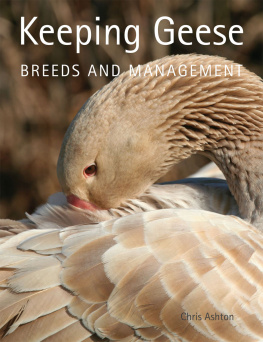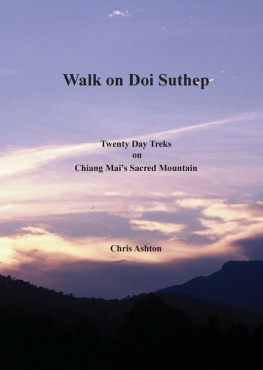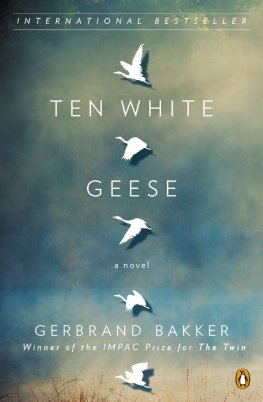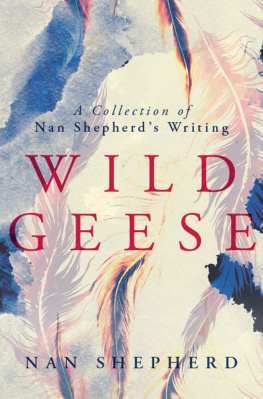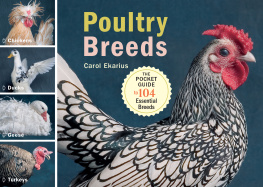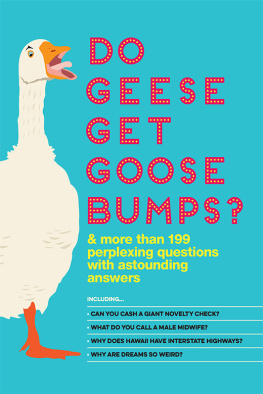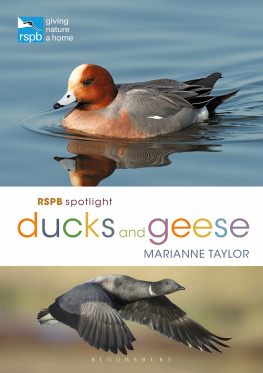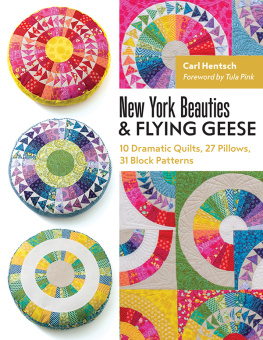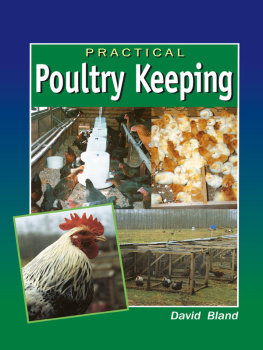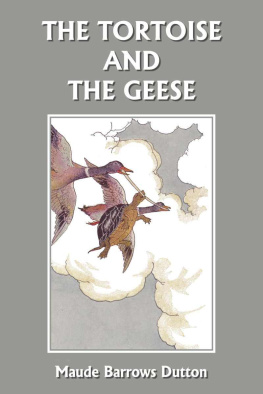Useful Contacts
Allen & Page
Tel: 01362 822900
www.smallholderfeed.co.uk
Ascott Smallholding Supplies Ltd
Tel: 0845 130 6285 or 01666 826931
Fax: 01666 825402
www.ascott-dairy.co.uk
British Goose Producers
Tel: 0845 302 2833
Fax: 020 7928 6366
www.geese.cc/index.html
BOCM-Pauls Ltd (Marsdens Game Feeds)
Tel: 0845 0250 444
www.bocmpauls.co.uk
Brinsea Products Ltd
Tel: 0845 226 0120
Fax: 01934 820 250
www.brinsea.co.uk
Defra Department for Environment, Food and Rural Affairs
www.defra.gov.uk
Country Smallholding Magazine
Tel: 01799 540922
www.countrysmallholding.com
Egg Crafters Guild
www.eggcraftersguild.webs.com
Fancy Fowl Magazine
Tel: 01728 622030
www.fancyfowl.com
The Norfolk Feather Co.
The Feather Mill Diss
Norfolk
IP224AS
Tel: 01379 643187
Humane Slaughter Association
Tel: 01582 831919
Fax: 01582 831414
www.hsa.org.uk
www.bio-medicine.org/medicine-news/Scientists-Establish-Link-Between-Foie-Gras-and-Disease-22841-1
Interhatch
Tel: 01246 264646
www.interhatch.com
Polytank Group Limited
Tel: 01772 632850
Fax: 01772 679615
polytank.co.uk
E F Shingfield & Sons
Frost Row Farm House
Watton Road
Hingham
Norwich
NR9 4NW
Tel: 01953 850747 or 01953 850259
Smallholder Magazine
Editor Liz Wright
Telephone: 01354 741538
Fax: 01354 741182
www.smallholder.co.uk
TP Activity Toys
01562 733352
www.tptoys.com

The Origins of the Domestic Goose
Early Domestication
Charles Darwin considered there was archaeological evidence for the domestication of geese in Egypt more than 4,000 years ago, since Egyptian frescoes depict cranes, ducks and geese, recording their fattening and slaughter. The fresco of the six geese at Meidum shows Greylags, White-fronted and Red-breasted geese: now at the Cairo Museum, the painted plaster is dated as the Fourth Dynasty, 2575 2355BC. The emphasis on geese is not surprising. The sacred animals of Amun, Lord of Creation, were the ram and the goose, kept at temples throughout Egypt, and although it cannot be certain that the Greylags were tame because paintings do depict the trapping of birds in the marshes, domestication would soon follow from the natural behaviour of the birds. They are thought to have been fully domesticated by the time of the Egyptian New Kingdom (15521151BC): for example, a flock of geese are counted and caught in Nebamuns Geese at Thebes, painted in about 1350BC (British Museum).
There are other species of wild geese which could have been domesticated: the Bar-headed goose (Anser indicus) from India and Central Asia, the Bean goose, White-fronted and Pink-footed goose from Europe, and the Canada (Branta canadansis) from North America. In some of these, smaller size was a limiting factor, and perhaps also behavioural characteristics; Egyptian geese (Alopochen aegyptiacus), for example, tend to be aggressive.
In China, the wild Swan goose was the foundation species for the domesticated Asiatic breeds, which include the Hong Kong goose (African) and the Chinese. The breeding range of the wild bird was formerly much more extensive than it is today, stretching from Japan and Korea into the interior of China, Mongolia and Russia. The wide range of the bird means that it could have been domesticated almost anywhere in East Asia, but the origin of the Chinese and Africans is generally taken to be China. Delacour states that the goose was raised for many centuries in China, beginning over 3,000 years ago. Pottery models of ducks and geese dating back to about 2500BC suggest early domestication (Clayton, 1984).
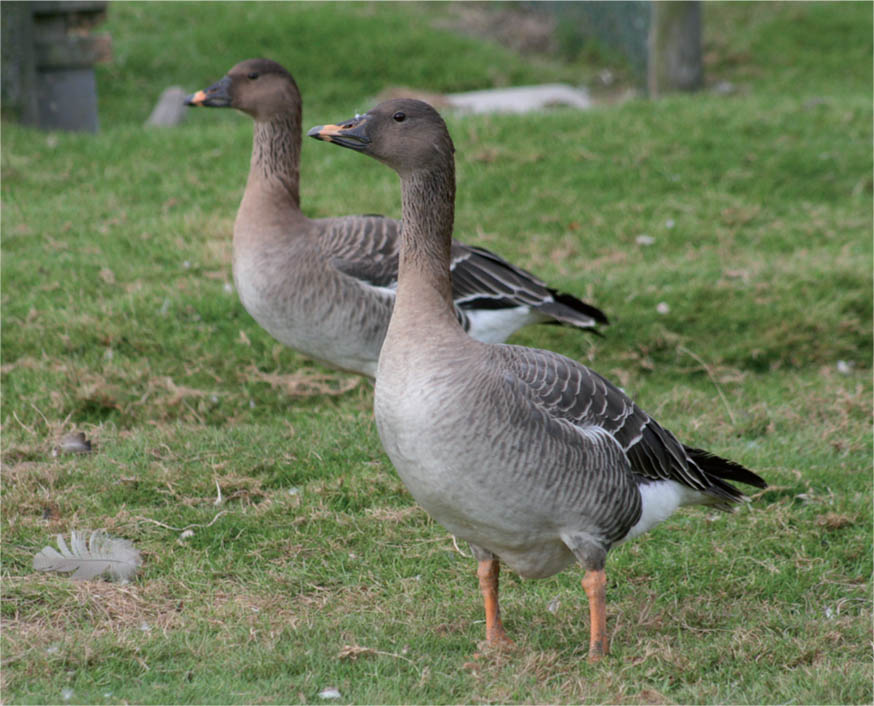
Bean geese: it has been suggested that the domestication of the goose in China might have involved the Bean goose, in addition to the Greylag and Swan goose. Analysis of the karyotype of Chinese and African geese suggests otherwise (see ).
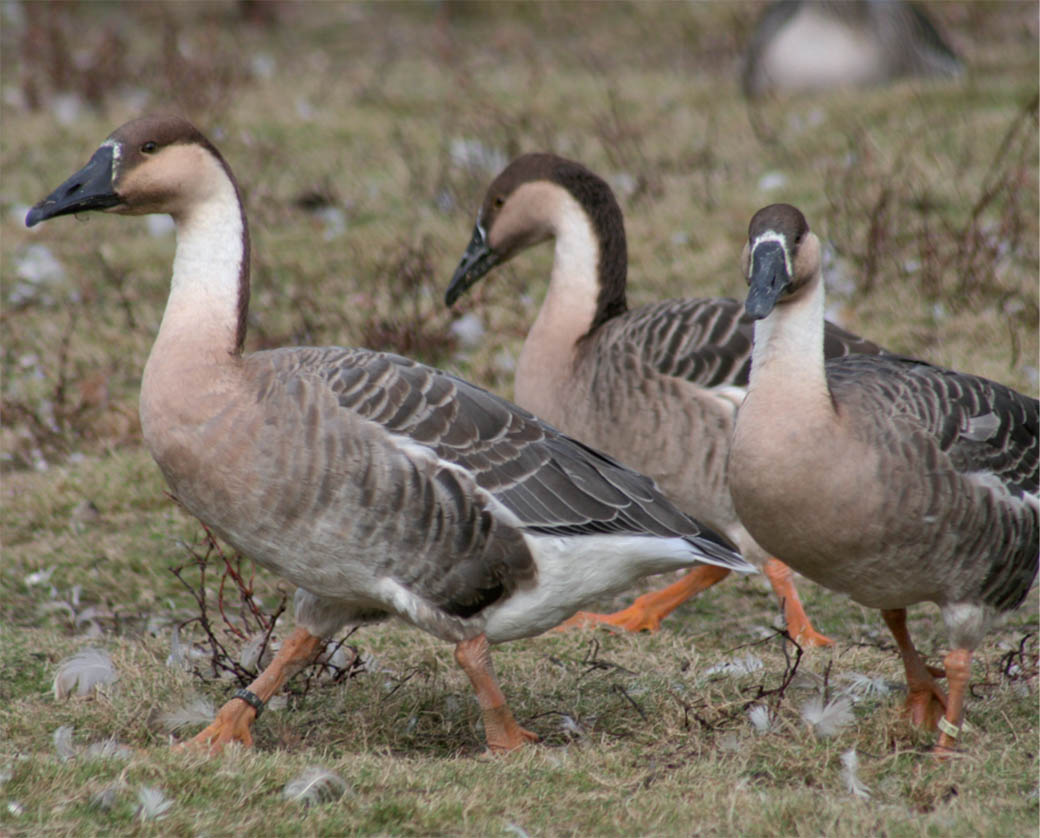
The Swan goose, ancestor of the domestic Chinese goose and African goose.
European Geese
Ancient domesticated breeds, such as the Roman, are acknowledged to have been selected and developed from the Greylag. The species was once common throughout Europe and Asia, overwintering in North Africa, Greece and Turkey, as well as India, Burma and China (Owen 1977). There are two races, which are slightly different: the Western race is more orange in the bill, whereas Eastern birds are bigger, have slightly paler plumage and an attractive pink bill. Todd (1979) attributes this colour difference to natural selection in two once-distinct populations that were divided by the Pleistocene ice sheet. But as the ice retreated, the populations merged again so that today there are gradations of feather and bill colour across Europe.
The Greylag has several points favouring its selection for domestication. First, it did not always migrate, but lagged behind, often failing to follow the truly migratory Pink-footed and White-fronted geese north to their breeding grounds. Second, its range is extensive, which offers numerous geographical possibilities for its domestication. It also has a particularly amenable temperament: it is more tolerant of disturbance by man than many others, it is the most adaptable of European geese in food requirements, and will nest closer to man than other species. One population breeds in Iceland and overwinters in Britain, whilst another group breeds in Scandinavia and central Europe and overwinters in southern Europe and North Africa.
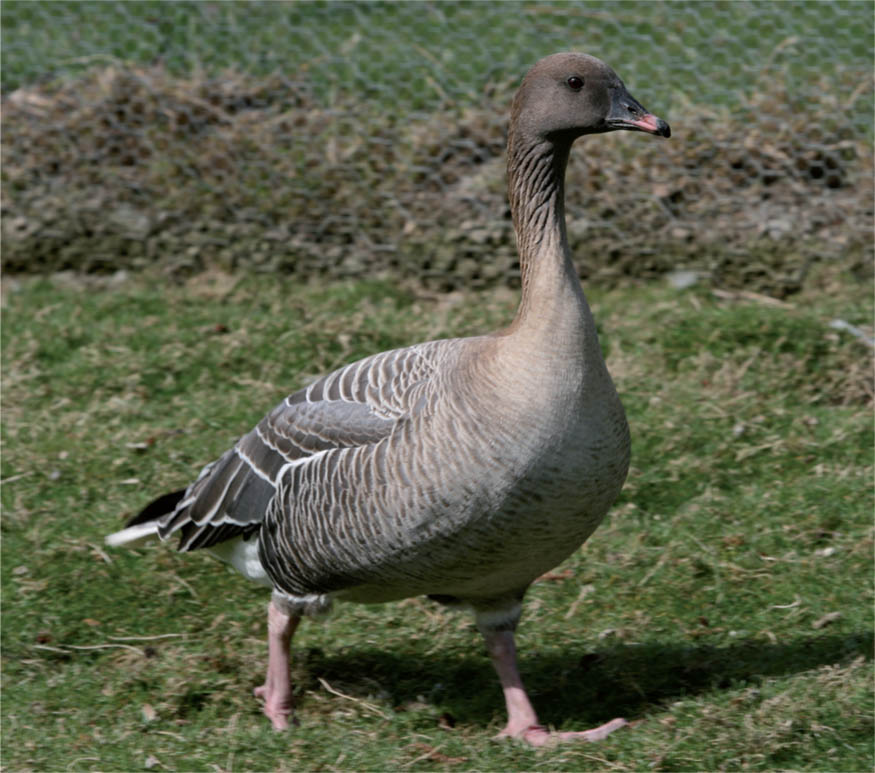
Pink-footed goose (Anser brachyrhynchus). This species breeds in Greenland, Iceland and Spitzbergen, and overwinters in Britain and mainland Europe. It is not as large as the Greylag, and is more wary in the wild.
It also used to breed in the East Anglian Fens and the Netherlands before the destruction of the marshes. Weir (1902), for example, quotes Pennant from 1776:
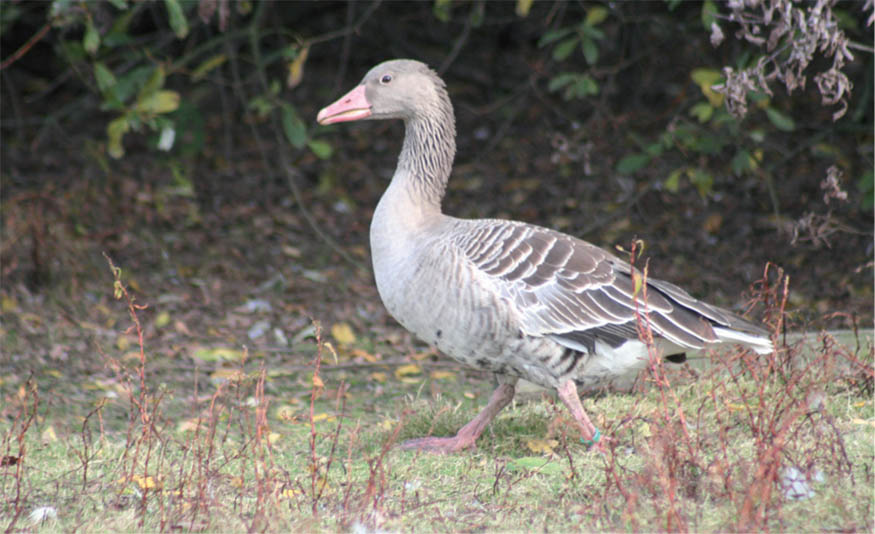
The Eastern Greylag is a slightly larger and paler grey bird than the Western Greylag, with a slightly longer, pink bill Sauwens-Lambrighs.
This species resides in the fens the whole of the year: breeds there, and hatches about eight or nine young, which are often taken, easily made tame, and esteemed most excellent meat, superior to the domestic goose.
As a gosling, the Greylag readily imprints on humans, and for this reason became the subject of research on goose behaviour by Konrad Lorenz. As a child he had been fascinated by geese and returned to them for material for his studies. Those who have kept and reared both wild and domestic geese will find it easy to understand why early subsistence people in Europe would have learned to domesticate these amenable birds and to develop their size on the farm.
More details of domestication emerge with written records, such as Homers reference in the Iliad
Next page
